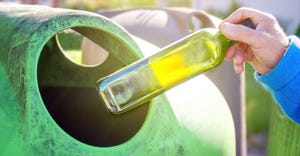What the Growth of Big Data Means for Waste & Recycling
Big data provides a more granular understanding of operations and assets, in addition to equipping the industry to better adapt in real-time and prepare for future needs.

Depending on the data being collected, large amounts of similar data can be used to identify trends and patterns that could highlight improvement opportunities. The solid waste industry has finally reached the point where collecting data from its mobile operations is relatively inexpensive and systems are reliable.
“I think as an industry we are only just now scratching the surface on the use of big data for solid waste management and the possibilities are only limited by our own creativity,” says Don Ross, director of operations for Kessler Consulting Inc. based in Tampa, Fla.
Ross says the best example of data changing the industry is the use of route optimization.
“Route optimization has provided greater and faster visibility to improving the utilization of our assets,” he says. “Collection represents the largest component of operating costs and optimization results in more productive collection routes and subsequently the need for fewer vehicles. I expect other emerging technologies to offer similar opportunities for improvement.”
Big data provides a more granular understanding of operations and assets, in addition to equipping the industry to better adapt in real-time and prepare for future needs, says Amity Lumper, co-president of Cascadia Consulting Group based in Seattle, Wash.
Ross and Lumper will discuss these ideas further during a session named Big Data & Smart Waste at 10:30 a.m. Monday, May 8 at this year’s Waste Expo in New Orleans.
“Smart waste technologies are taking off,” Lumper says. “We’re particularly excited about sensors, robotics, apps, machine learning, automation, and on-board computing systems. According to Navigant Research, the global market for smart waste collection technology is projected to grow by a compound growth rate 16 percent between 2016 and 2025.”
Ross says the “connected” truck is also a big key today. Bin sensors that determine fullness are being deployed now and roll-off compactors have been self-dialing dispatch offices for years indicating they are ready for pickup.
“What we do with this data is where things get interesting,” he says.
Real-time, on-demand routing is in place now to help address operating costs and improve services. Remote self-diagnostics from collection vehicles are identifying required repairs and pre-ordering replacement parts before the truck even gets to the shop, and handheld applications and autonomous service verification tools are being used to measure program success and fine tune education and outreach programs.
“I think 'smart' is an overused term right now because everyone has a different definition of what a smart technology is in our industry,” says Ross. “All at the same time we are introducing technologies that connect and capture data from our collection vehicles, our containers, litter bins, and even processing facilities. These could all be considered 'smart' systems.”
Some technologies being adopted by the waste industry have been in use in other industries for decades – bar code scanners in retail. Other technologies, such as on-board computing systems and optical sensors are increasingly common in modern collection and processing operations.
“Emerging technologies, such as robotics and distributed sensor networks are still being commercialized in our industry, but hold great promise for the future of smart waste,” says Lumper. “Realizing the full benefit of these technologies also relies on effective integration with existing systems and organizational practices and norms.”
According to Ross, the waste industry has to be prudent that it is not introducing technology simply for the sake of technology.
“Just because we can collect a data point does not always mean that we should,” he says. “I spend a lot of time with clients identifying first why they want a certain data point, how that data will be used, and if they can commit the resources to managing based on that data.”
These new tools can be very effective if the commitment of resources can be made.
“If a contaminated load of recyclables arrives at a MRF for example, and the vehicle can tell us which customers had their carts curbside that day, an electronic communication educating those participating residents on how to recycle right can be distributed to just that group of customers even before the cart is retrieved from the curb that evening,” says Ross.
About the Author
You May Also Like


